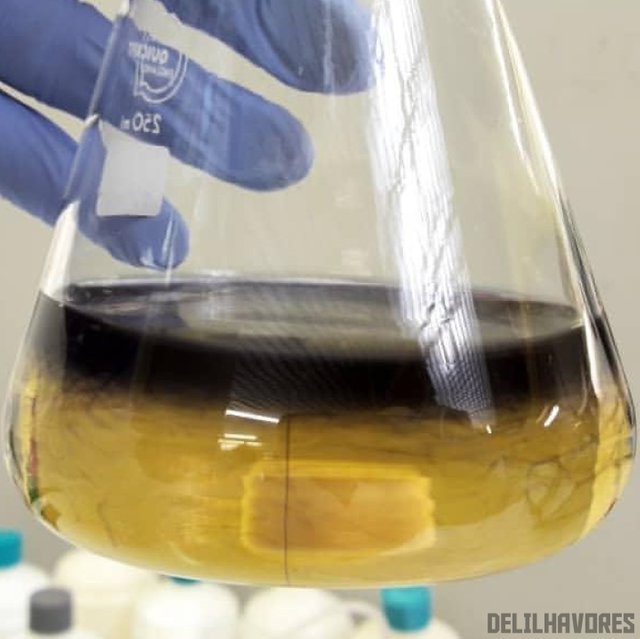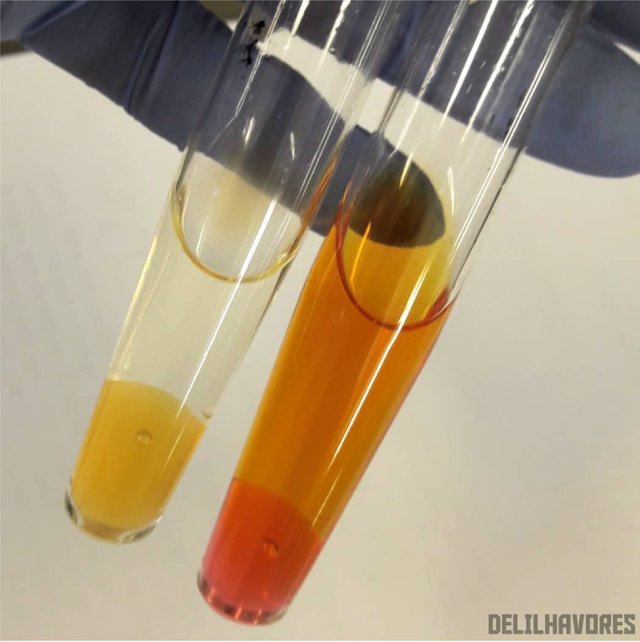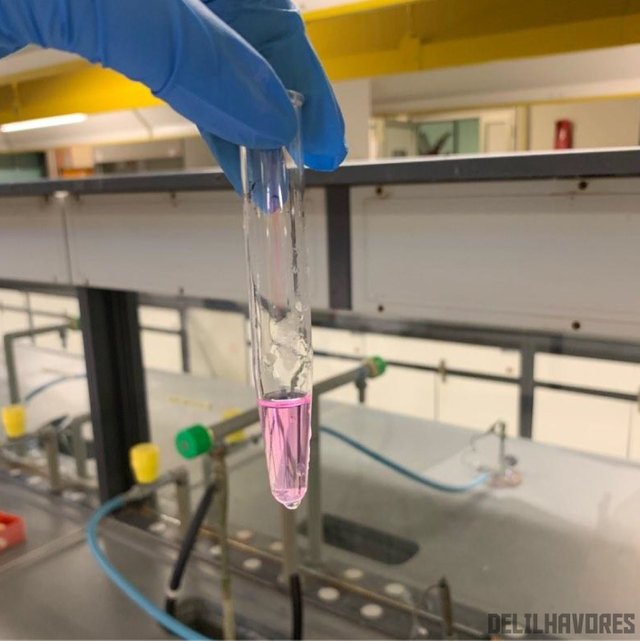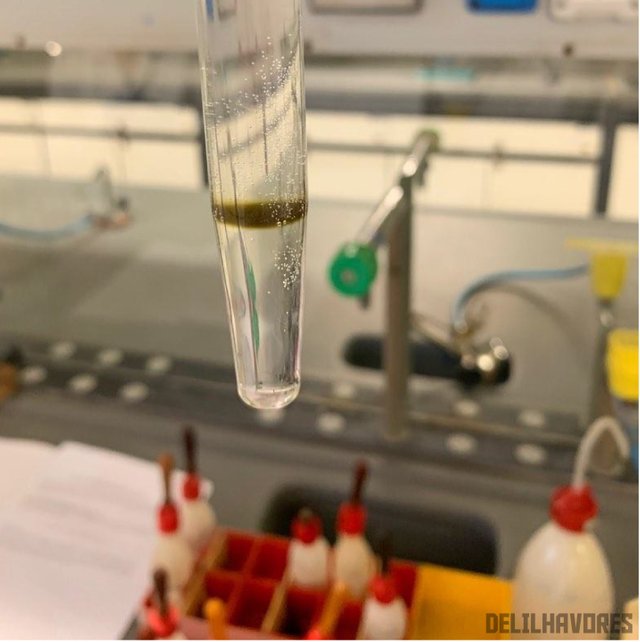How to draw up a laboratory report - Come stilare una relazione di laboratorio
Hello everybody,
Whether it is a chemistry, biology, microbiology or any other subject laboratory, a laboratory report is always strongly recommended, if not specifically requested by teachers or employers.
So here are some tips to better deal with the drafting.

Introduction
The laboratory report is an integral part of the work process itself and is drawn up for various reasons, including, mainly:
- Teaching: Especially in the university context, writing a report can help in the study to better understand the concepts underlying the topic and can help the teacher in determining whether the student has understood the experience or not;
- Reproducibility: A well-written report allows anyone, anywhere in the world, to reproduce what has been done and this is a fundamental feature in scientific experience.
It is always good to keep in mind that from the report, whoever reads, he will have to be able to understand what is being done, how to proceed, for what reason and how long the experiment requires.
First of all, it is of fundamental importance to read the safety rules of the laboratory and to have any safeguards, including: protective goggles, gowns, gloves, fireproof shoes, masks, ... The safeguards depend, obviously, the degree of danger of the substances with which it comes into contact and the working environment.

Rules
A good lab report must stick to a few simple rules:
- Since it is a matter of communicating a scientific-themed work, which others must be able to reproduce and verify, the description must be made using specific terminology, in a precise and concise way but, at the same time time, complete;
- Try to be as accurate as possible. For example, the phrase "I warmed up a little" is not appropriate, while instead it is correct "The substance was heated to 110 ° C for 5 minutes";
- Avoid using the first person singular, preferring the impersonal use of verbs;
- Subjective assessments must be omitted, while sentences on the success or failure of the experience are accepted, if evaluated objectively. For example, it is not suitable to write "The experiment failed because I worked badly", but rather "The experiment failed probably due to a manual error in the solvent drop count".

Skeleton
Any type of written work must face the problem that the reader can often be bored or confused by reading, to the point of wanting to end it as soon as possible. This is because, for example, the reader might tend to get lost in the speech if the latter is not linear. Or, again, the reader may perceive a sense of confusion if the terms are repeated, unclear or misleading.
To overcome all this and to provide an ordered graphic organization, you can resort to a skeleton structure that traces the various phases of the scientific experiment.
Below I propose a structure that, in my opinion, is well suited to any type of laboratory experience:
- Title: It is important that you highlight, in a few words and precisely, the meaning of the work to be done;
- Name of the operator, place and date;
- Objectives: The presentation of the objectives is fundamental to make people understand what the purpose of the experience is. At the end of the report, two lines can be spent to specify whether they have been reached or not;
- Theoretical aspects: In this point the methods and techniques adopted to achieve the above objectives are explained. Briefly, it is important to also illustrate the operating principles of the instruments used. This is because for the reader it could be the first impact with the type of experiment illustrated;
- Materials: It is essential to correctly list all glassware (including capacity), biological material, reagents, instruments (including basic ones), ... Always indicating the quantity with the appropriate units of measurement;
- Procedure: This part consists of the actual description of the operational steps. It is necessary to bring back everything necessary, better if numbered in succession for a clear vision at a glance and with a purely scientific language;
- Results: Based on the type of experience, the results could lend themselves to being included in the table, or in graphs, or even simply being described in words. It is the operator's job to determine which of the previous methods is the most appropriate;
- Conclusion: At this point you can discuss the success or otherwise of the experiment, addressing any problems with a critical sense;
- Bibliographic references (possibly).

I hope these tips have been helpful in drafting a great lab report.
Have a good job!
Delilha
ITA
Ciao a tutti,
Che si tratti di un laboratorio di chimica, biologia, microbiologia o qualsiasi altra materia, una relazione di laboratorio è sempre fortemente consigliata, se non addirittura richiesta espressamente da docenti o datori di lavoro.
Ecco quindi alcuni consigli per affrontare al meglio la stesura.

Introduzione
La relazione di laboratorio è parte integrante del processo stesso di lavoro e viene stilata per diversi motivi, tra cui, prevalentemente:
- Didattica: Soprattutto in ambito universitario, scrivere una relazione può aiutare nello studio per capire meglio i concetti alla base dell’argomento e può aiutare il docente nel determinare se lo studente abbia capito oppure no l’esperienza;
- Riproducibilità: Una relazione ben scritta permette a chiunque, in qualsiasi parte del mondo, di riprodurre ciò che è stato fatto e questa è una caratteristica fondamentale nell’esperienza scientifica.
È sempre bene tenere a mente che dal report, chiunque legga, dovrà essere in grado di comprendere cosa si fa, come si procede, per quale motivo e quanto tempo richiede l’esperimento.
Come prima cosa, è di fondamentale importanza leggere le norme di sicurezza del laboratorio e dotarsi di eventuali presidi, tra cui: occhiali di protezione, camice, guanti, scarpe ignifughe, maschere, … I presidi dipendono, ovviamente, dal grado di pericolosità delle sostanze con cui si viene a contatto e dall’ambiente di lavoro.

Regole
Una buona relazione di laboratorio deve attenersi ad alcune semplici regole:
- Dato che si tratta di comunicare un lavoro a tema scientifico, che altri devono essere in grado di riprodurre e verificare, la descrizione deve essere fatta utilizzando terminologia specifica, in modo preciso e sintetico ma, allo stesso tempo, completo;
- Si deve cercare di essere più precisi possibile. Ad esempio, non è opportuna la frase “Ho riscaldato un po’”, mentre invece è corretto “La sostanza è stata riscaldata a 110 °C per 5 minuti”;
- Evitare di utilizzare la prima persona singolare, preferendo l’uso impersonale dei verbi;
- Vanno omesse valutazioni soggettive, mentre sono accettate frasi sulla buona riuscita o meno dell’esperienza, se valutate con obiettività. Ad esempio, non è idoneo scrivere “L’esperimento non è riuscito perché ho lavorato male”, ma bensì “L’esperimento non è riuscito probabilmente a causa di un errore manuale nella conta delle gocce di solvente”.

Scheletro
Qualsiasi tipologia di elaborato scritto deve far fronte al problema che spesso il lettore può essere annoiato o confuso dalla lettura, a tal punto da volerla terminare al più presto. Questo perché, ad esempio, il lettore potrebbe tendere a perdersi nel discorso se quest’ultimo non è lineare. Oppure, ancora, il lettore potrebbe percepire un senso di confusione se i termini sono ripetuti, poco chiari o fuorvianti.
Per ovviare a tutto ciò e per fornire un’organizzazione grafica ordinata, si può ricorrere a una struttura scheletro che ripercorre le varie fasi dell’esperimento scientifico.
Di seguito propongo una struttura che, a mio avviso, si addice bene a qualunque tipo di esperienza di laboratorio:
- Titolo: È importante che evidenzi, in poche parole e precisamente, il significato del lavoro da svolgere;
- Nome dell’operatore, luogo e data;
- Obiettivi: La presentazione degli obiettivi è fondamentale per far comprendere quale sia lo scopo dell’esperienza. Alla fine dell’elaborato, si possono spendere due righe per specificare se essi siano stati o meno raggiunti;
- Aspetti teorici: In questo punto vengono spiegati i metodi e le tecniche adottate per raggiungere gli obiettivi di cui sopra. Brevemente, è importante illustrare anche i principi di funzionamento delle strumentazioni utilizzate. Questo perché per il lettore potrebbe essere il primo impatto con il tipo di esperimento illustrato;
- Materiali: È essenziale elencare in modo corretto tutta la vetreria (compresa la capacità), il materiale biologico, i reagenti, gli strumenti (compresi quelli basilari), … Indicando sempre la quantità con le unità di misura adeguate;
- Procedimento: Questa parte consiste nella vera e propria descrizione dei passaggi operativi. Bisogna riportare tutto il necessario, meglio se numerato in successione per una chiara visione a colpo d’occhio e con linguaggio prettamente scientifico;
- Risultati: In base al tipo di esperienza, i risultati potrebbero prestarsi all’essere inseriti in tabella, oppure in dei grafici, oppure ancora a essere semplicemente descritti a parole. È compito dell’operatore determinare quale delle precedenti modalità sia la più adeguata;
- Conclusione: In questo punto si può discutere della riuscita o meno dell’esperimento, affrontando eventuali problematiche con senso critico;
- Riferimenti bibliografici (eventualmente).

Spero che questi consigli possano essere stati utili nella stesura di un ottimo report di laboratorio.
Buon lavoro!
Delilha
Questo post è stato condiviso e votato all'interno del discord del team curatori di discovery-it.
This post was shared and voted inside the discord by the curators team of discovery-it
Hello,
Your post has been manually curated by a @stem.curate curator.
We are dedicated to supporting great content, like yours on the STEMGeeks tribe.
If you like what we are doing, please show your support as well by following our Steem Auto curation trail.
Please join us on discord.
Congratulations @delilhavores! You have completed the following achievement on the Steem blockchain and have been rewarded with new badge(s) :
You can view your badges on your Steem Board and compare to others on the Steem Ranking
If you no longer want to receive notifications, reply to this comment with the word
STOPTo support your work, I also upvoted your post!
Vote for @Steemitboard as a witness to get one more award and increased upvotes!
This post has been voted on by the SteemSTEM curation team and voting trail. It is elligible for support from @curie and @minnowbooster.
If you appreciate the work we are doing, then consider supporting our witness @stem.witness. Additional witness support to the curie witness would be appreciated as well.
For additional information please join us on the SteemSTEM discord and to get to know the rest of the community!
Please consider using the steemstem.io app and/or including @steemstem in the list of beneficiaries of this post. This could yield a stronger support from SteemSTEM.
consigli utilissimi che ogni laboratorio dovrebbe attenzionare
I am impressed by the quality of these pictures! Wow! That also reminds me my hard time in chemistry labs when I was 17, breaking everything even when I was trying not to...
Hi, thank you so much! I am very happy when someone appreciate my posts! :) I took this photos during one of my first chemistry labs at university, in particular that day was about the recognising of organic and inorganic compounds! At the beginning it's difficult for every student I suppose, but never stop trying ahah
Oooh I actually definitely stopped... I am a physicist now :D